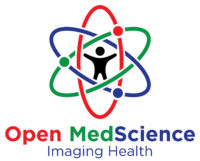Endoscopic Ultrasound
Endoscopic ultrasound (EUS) is a highly specialised medical procedure that combines endoscopy and ultrasound to obtain images and information about the digestive tract and the surrounding tissue and organs. It involves an ultrasound probe on the tip of an endoscope, which allows for closer proximity to the organs of interest than external ultrasound. The proximity enhances the quality of the images, providing valuable insight into a patient’s condition.
This technique is particularly useful for examining the layers of the intestinal wall, the pancreas, the liver, and the lymph nodes. EUS can help in diagnosing the cause of conditions like abdominal pain or abnormal weight loss, and it’s instrumental in evaluating known cancers in the digestive system to determine how far the cancer has spread and if it is operable. The procedure is commonly performed under sedation to ensure the comfort of the patient.
One of the main advantages of endoscopic ultrasound is its ability to facilitate fine-needle aspiration (FNA) for biopsy purposes. The EUS-guided FNA allows doctors to collect tissue samples from organs or lesions within the digestive tract or nearby structures with minimal discomfort and complications. This has proven especially useful in the diagnosis of pancreatic cancer, as it provides a safe method for obtaining a biopsy from a pancreas lesion, which might be unreachable with other non-surgical techniques.
The role of EUS extends beyond diagnostic purposes. It is also used therapeutically in the management of certain gastrointestinal disorders. For example, it can be used to drain cysts and necrotic tissues in cases of chronic pancreatitis or abscesses. The technique is advancing, with new applications in interventional procedures such as delivering drugs directly to targeted sites within the body, which could be particularly beneficial in treating tumours.
The safety profile of EUS is favourable; complications are rare when experienced practitioners perform the procedure. However, potential risks include infection, bleeding, and puncture of the gastrointestinal tract, which are general risks associated with endoscopic procedures.
In the UK, the availability of EUS is growing, with more gastroenterologists and surgical centres acquiring the expertise and equipment necessary to perform this advanced diagnostic tool. As it becomes more widespread, its contributions to early and accurate diagnosis and therapeutic interventions are likely to expand, ultimately improving patient outcomes in gastroenterological care.
The future of EUS looks promising as technology advances. Innovations in ultrasound technology, such as higher resolution probes and the integration of artificial intelligence for better image analysis, are expected to enhance its diagnostic capabilities further. This progression will undoubtedly cement EUS as a cornerstone in the management of gastrointestinal diseases.
You are here:
home » Endoscopic Ultrasound

